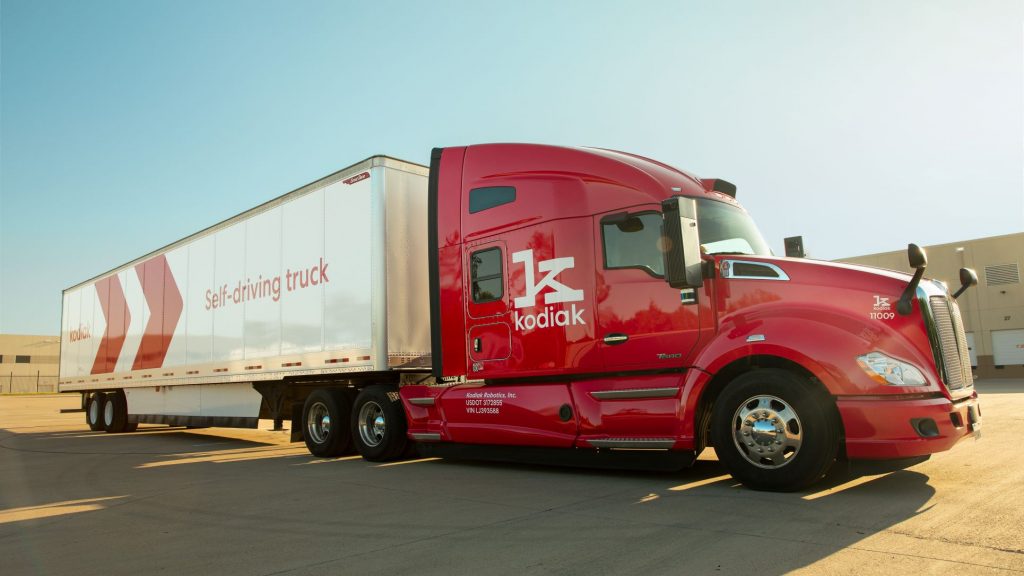
When it comes to autonomous vehicles, self-driving cars often grab most of the deadlines. However, experts say autonomous trucking might be advancing faster, with many possible reasons why.
In an August report, emerging technology analyst firm IDTechEx in Cambridge, England, predicted the autonomous trucking market would see a 15-year compound annual growth rate of 47%. All in all, IDTechEx suggested that autonomous trucks had the greatest long-term potential among heavy-duty autonomous vehicles.
If one looked across the autonomous vehicle industry, “then robotaxis—Waymo, Cruise, and so on—have made the most progress,” said IDTechEx Technology Analyst James Jeffs. However, this progress has taken some time and a lot of investment, “and more progress is coming slowly. I think autonomous trucks are developing more quickly at the moment.”
Any impacts that autonomous vehicles could make on trucking have the potential to prove to be huge.
“Trucking is an $800 billion industry in the U.S. alone, second only to healthcare, and it’s an over $4 trillion industry worldwide,” said Don Burnette, Founder and CEO of autonomous vehicle startup Kodiak Robotics in Mountain View, CA. “Autonomous trucks can produce some real value there.”
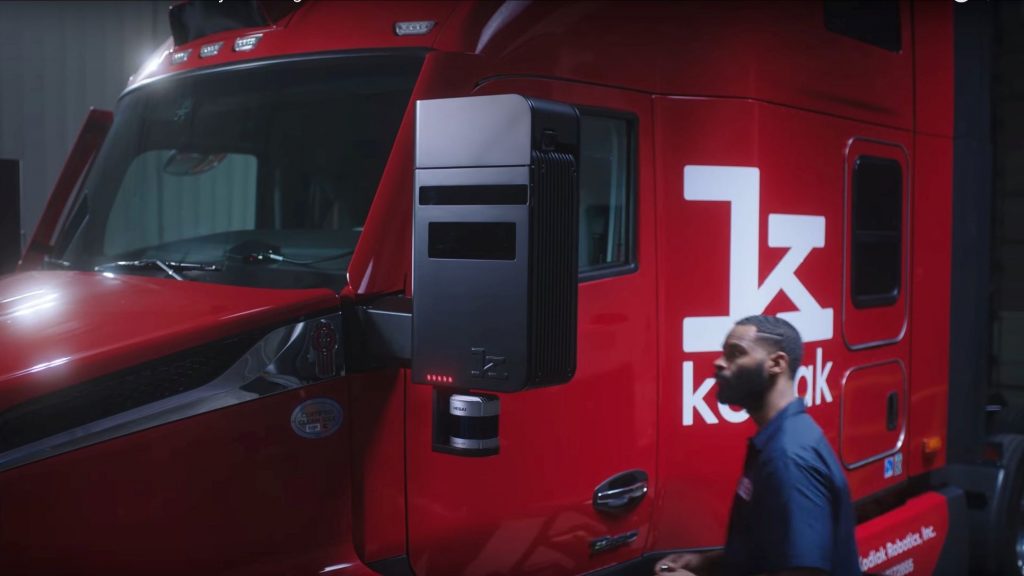
Driver shortage
A key driver of autonomous trucking is the much-lamented shortage of drivers in the industry. In 2021, the American Trucking Associations estimated that the shortage hit a historic high of more than 80,000 truck drivers.
“There’s been a driver shortage in commercial for decades, and it’s been growing,” Burnette said. “The average age of drivers is going up year after year, and the younger generation is not filling those jobs. They don’t like the idea of being away from their families for days or weeks; they want regional driving jobs.”
The problems raised by the driver shortage became more acute during the pandemic. “Regular people like you and me started to feel the pressure of supply-chain issues—concerns over not getting toilet paper, milk, or diapers became real overnight,” Burnette said. “The demand for moving goods is going up; people want things delivered tomorrow.”
Given all these concerns, “autonomous trucking can relieve the shortage,” Jeffs said. In contrast, when it comes to taxis, “there are a lot of Uber drivers out there,” said Jan Becker, Co-founder and CEO of autonomous vehicle operating system firm Apex.AI.

Simpler environments
There are many other reasons autonomous trucking may advance more quickly than other autonomous vehicle segments. For example, autonomous trucks likely must deal with far simpler environments than self-driving cars.
“When it comes to defining autonomy for vehicles, Level 5 says you can drive anywhere, whereas Level 4 is all about picking a specific operating design domain, or ODD, where you say the vehicle can drive,” said Sam Abidi, Chief Commercial Officer of autonomous trucking startup Embark Trucks in San Francisco. “How you define the scope of the ODD affects the effort it takes you to develop an autonomous system. Robotaxis typically have to complete a trip within a metropolitan area or it’s not a useful service, and they will have to pretty much encounter the breadth of roadway experiences—pedestrians, merging, tight turns, and more. In contrast, if you scope your ODD to be on the highway, you take away 90% of your complications.”
This does not mean “that autonomous trucking is an easy technological problem—it’s still very difficult,” Abidi said. “But the number of scenarios their systems have to handle is orders of magnitude less.”
This difference in complexity also has a big impact on the amount of validation that different autonomous vehicle systems must experience before they can operate in the real world.
“An autonomous vehicle system not only has to drive lots of miles on actual roads but also heavily rely on simulations to cover a variety of scenarios,” Burnette said. “And there are many, many more variations in scenarios that you find in dense urban environments than on highways, so orders of magnitude more validation needs to be done.”
There are some hardware differences in the systems of autonomous trucks and autonomous cars. Since autonomous trucks are largely designed to move on highways, they generally drive at faster speeds, and that, combined with their increased weight and longer times needed to brake, means their lidar, radar, and camera sensors have to see farther, Burnette said.
On the other hand, when it comes to computer processors, trucks have more space, “so you can use cheaper electronics,” Abidi said. “When it comes to all the actual hardware, the costs are roughly the same between autonomous trucks and cars. The part that developers spend the most dollars on is software development, and for trucking it is orders of magnitude less, allowing us to be more capital efficient.”
Productivity gains
In addition, the potential benefits of autonomous trucks may be far more clear than with other autonomous vehicles.
“How often do you walk around thinking, ‘If only I had a robotaxi to get where I need to go today,’“ Burnette said. “Most people get along [with] their daily lives without the existence of robotaxis. Most people don’t spend any time thinking about what it’d be like to have a taxi or a rideshare that didn’t have a driver. So robotaxis are in the realm of ‘nice to have’ versus ‘need.’”
In contrast, not only may autonomous trucks help with the major driver shortage, but they may also make trucking far more productive and profitable.
“Currently, truck drivers are limited in terms of hours of service,” Burnette said. “At most, a driver can drive 11 hours a day, but on average, a long-haul truck driver drives about seven hours a day. That’s an incredible inefficiency in the system today. Trucks only make money when they’re moving. Autonomous trucks can drive essentially 24-7, stopping only to refuel and to pick up and drop off loads. So, you take an asset that you were only using for seven hours, and it can now move for almost 24. That’s about a three-times increase in asset utilization. This is an industry that usually sees gains measured in partial fractions of a percentage point in efficiency, so a three-times improvement is absolutely disruptive.”
In addition, when it comes to wages, “whereas a taxi driver costs a certain amount, a truck driver costs a multiple of that amount—it’s higher-skilled labor,” Abidi said. “Based on that alone, the autonomous vehicle system guiding a truck is more valuable on a per-mile basis. It’s a beautiful arbitrage opportunity—driving a truck is harder for humans, but it happens to be easier for technology, while the inverse is true for taxis.”
Easier to sell
Another critical advantage that autonomous trucking has compared to other autonomous vehicle segments is the nature of how decisions are made in their respective markets.
“When you are a robotaxi company looking to get off the ground, you have to convince tens of thousands, hundreds of thousands, maybe millions of individual consumers to jump into an autonomous vehicle, and most of them will not have spent an immense amount of time thinking about or researching the topic,” Abidi said. In contrast, “for autonomous trucking, you have to convince the 5, 10, 15, 20 people on an executive team that deploying autonomous trucks is more cost-effective, more reliable, and you have hours and hours to do it.”
For example, “in our partner development program, we spend 100 hours with a carrier development team to get them ready, willing, comfortable, and able to handle the subject, to weigh the pros and cons,” Abidi said. “Obviously, it makes no sense to spend 100 hours with every possible robotaxi consumer to get them to take a ride.”
In addition, “if you work in autonomous trucking, you are selling to a business, and can get them to consider business-based decisions,” Abidi said. “When you are selling to consumers, they may make decisions for criteria other than business-based ones.”
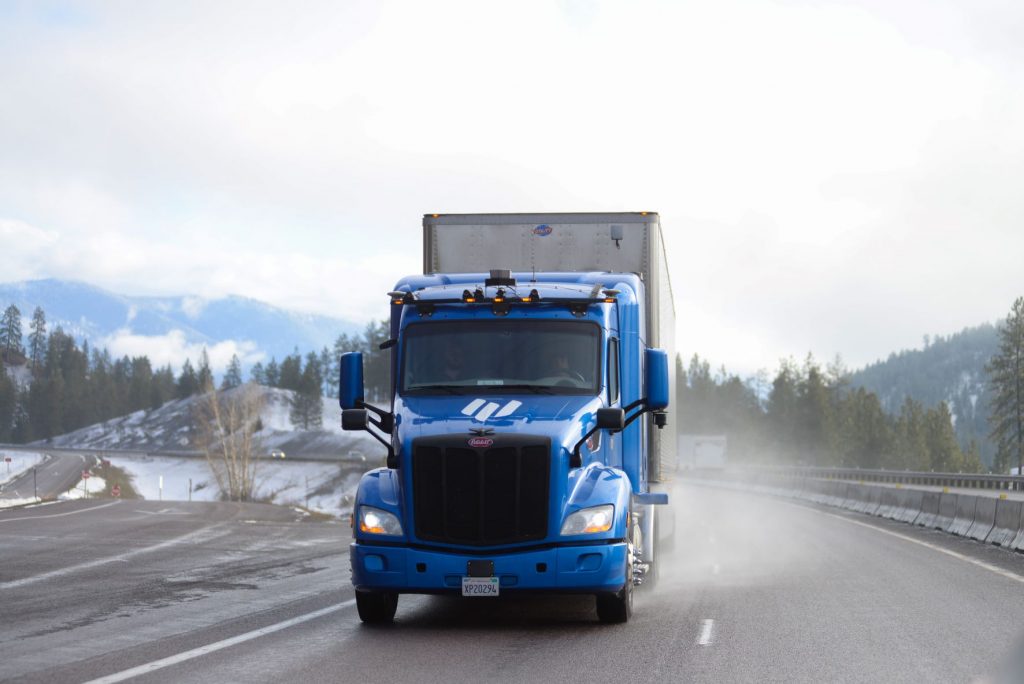
Embark’s strategy
The enormous market potential available to autonomous trucking has supported a number of approaches for companies seeking to work in this space.
“Unlike some other autonomous vehicle platforms, Embark is focused on carriers as the owners and operators of the vehicles, as opposed to owning and operating them ourselves,” Abidi said. “Existing carriers have immense scale for where these trucks can be deployed, and they’ve been doing it for decades. We’re looking to upgrade existing trucks to autonomy over time.”
All in all, “we’re not creating hardware components—we’re working with existing sensors and actuators and computers, and existing OEM trucks, and our software goes out and talks with all that,” Abidi said. “We can integrate with all four of the major truck-makers, allowing carriers to use the vehicles they are most comfortable with. We end up with an asset-light and quite scalable business configuration. We’re focused on software, on supporting the value chain.”
Embark has also launched a number of partnerships to grow its network across the country, such as with industrial real estate firm Alterra and trucking companies Ryder and U.S. Xpress to open driverless trucking stations. They are also collaborating with Texas to help the company’s self-driving vehicles identify, stop for, and interface with law enforcement vehicles. Embark has targeted 2024 to launch in the U.S. Sunbelt, the region stretching across the southeastern and southwestern United States, Abidi noted.
“We’re moving from handling commonly occurring events such as merges, lane-keeping, and stop-and-go traffic to more interesting and less-frequent events, such as getting pulled over by a police officer,” Abidi said. “It’s an example of how we break apart problems and find solutions to move on to the next problem.”
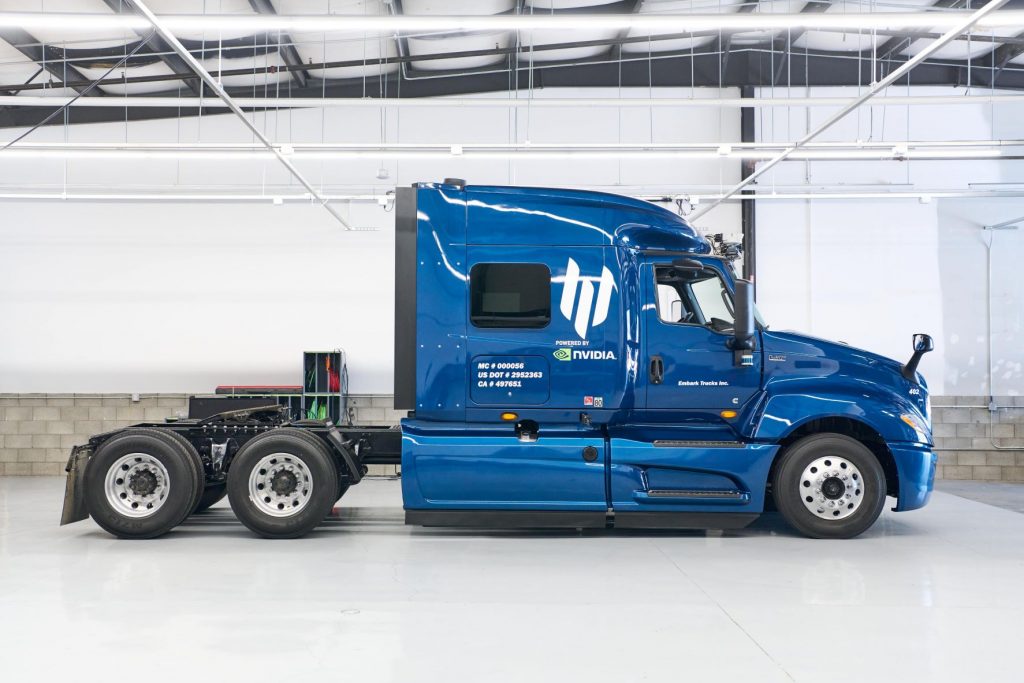
Kodiak’s approach
Kodiak has achieved a number of firsts, such as becoming the first autonomous trucking company to accomplish “disengage-free” highway trips, meaning journeys where the safety driver never disengaged the self-driving system to manually take control. It was also the first autonomous trucking company to publicly demonstrate the fallback system its self-driving vehicles use to guide themselves out of traffic in the event of a critical system failure.
In addition, Kodiak made the first fully autonomous deliveries in Texas history, navigating 205-mi (330-km) freight runs between Dallas and Houston, and started the first commercial autonomous trucking lane to the East Coast, a route connecting Dallas-Fort Worth and Atlanta.
Burnette noted that Kodiak “built our system modular, with maintenance and installation in mind. In our mind, that’s unique—no one else is taking consideration of maintaining multiple trucks in the field in mind.” Kodiak plans to perform its first driverless runs in the next couple of years and to fully deploy driverless trucks after that.
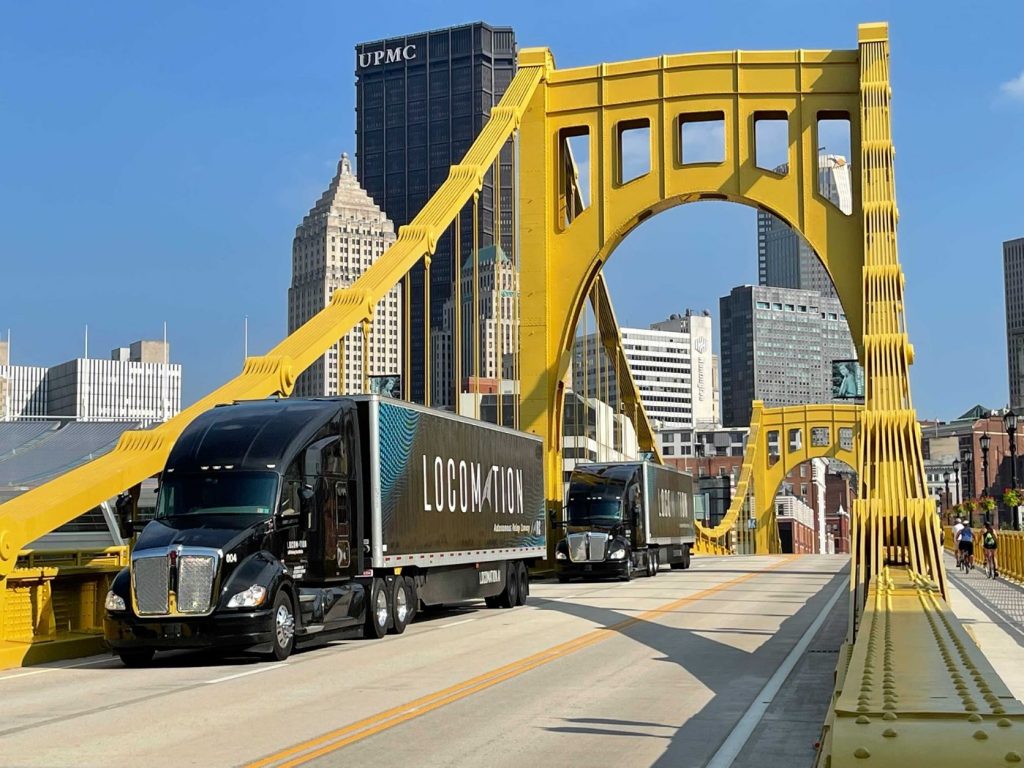
Locomation’s human element
Pittsburgh-based Locomation is pursuing a significantly different approach to autonomy in trucking. It envisions human-led convoys, each consisting of two trucks that are electronically tethered. This strategy enables one driver to operate the lead truck while a second driver may rest in the follower truck’s sleeper berth, and they can later swap roles. This allows carriers to safely operate two trucks for 20 to 22 hours per day, all while remaining in compliance with the U.S. Department of Transportation’s HOS (Hours of Service) regulations.
“We think Level 4 fully driverless autonomy in trucking is not a problem that’s going to be solved in the near-term,” said Sean Rushton, Locomation’s Director of Communications. “About 98% of the autonomous driving problem has been solved, but it’s that last 2%, with its edge cases and complexities, that so far remains out of reach. This has essentially been the case since the cross-country demonstrations of the 1990s. Our solution doesn’t require solving that last 2%—it gets handled by a human driver.”
Locomation’s logistics specialists break up the highway system into 500 mi (805 km) segments that are viable for their convoys to run on.
“One driver can drive 500 mi out, and the other driver can drive the 500 mi back, and they can go around and around,” Rushton said. “When a driver has had enough, they can schedule downtime and they’re at home, and another driver can take their place. So, there’s a big quality-of-life factor there.”
Locomation projects its method can help carriers deliver twice as much cargo, two times as far, and two times as fast, while reducing the per-truck greenhouse gas footprint by as much as 22%.
“Instead of trying to replace humans, we’re using autonomy to augment human drivers,” Rushton said. “Our solution doesn’t involve phasing them out but making them more efficient, which is where the majority of the cost savings are for automation anyway. Eliminating the human driver is not the big centerpiece of our system.”
Locomation aims to launch as soon as next year.
“We have four customers—not pilot programs, but real customer agreements for our systems,” Rushton said. “We expect to be the first company to bring autonomous trucking technology to commercial deployment safely, legally, and profitably at scale across the United States.”
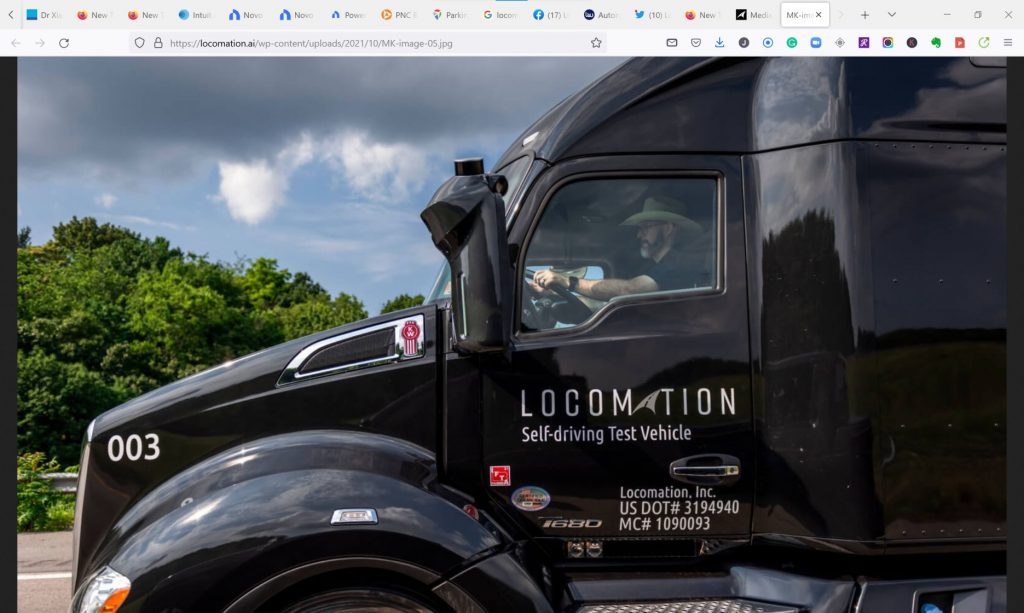
Regulatory hurdles
One concern that autonomous trucks will likely face that robotaxis do not “is that autonomous trucks will likely cross state boundaries, whereas robotaxis almost always do not,” Becker said. “That means autonomous trucks may face a patchwork of different regulatory environments and reporting requirements. That simply prohibits progress and commercialization for everyone.”
Eventually “the federal government should step in and provide regulations for the whole United States,” Becker said. “It can be done. It’s just that the federal government is very slow-moving.”

